#medusa knopf
Explore tagged Tumblr posts
Text
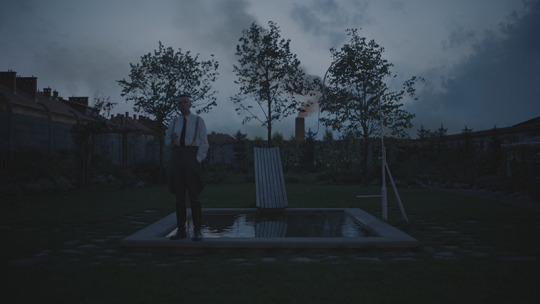

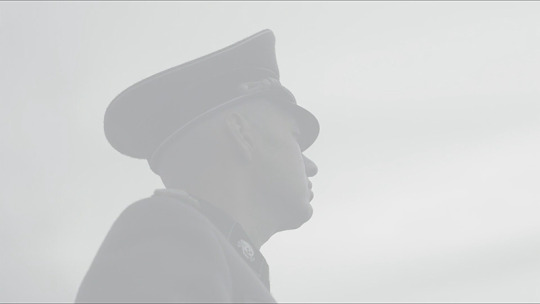
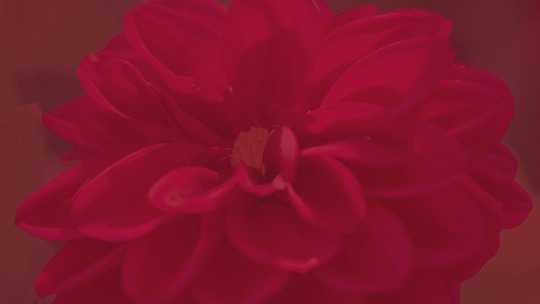
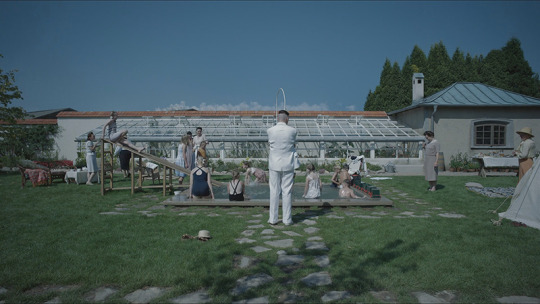

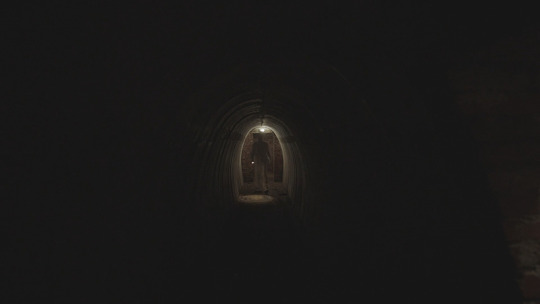
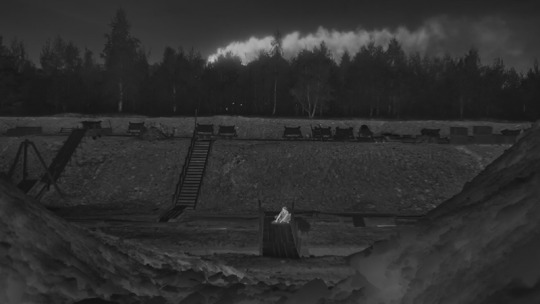
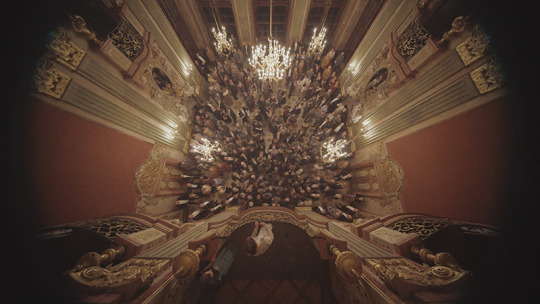
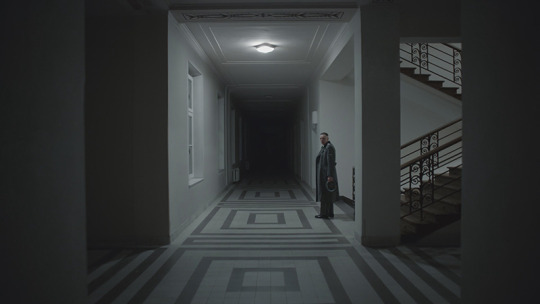
THE ZONE OF INTEREST (Jonathan Glazer, 2023)
Cuando vi esta película por primera vez en el Festival Internacional de Cine de Gijón, inmediatamente se me vinieron a la cabeza obras como 2001: A Space Odyssey o There Will Be Blood. ¿Qué motivos impulsaron a Jonathan Glazer a tomar decisiones formales tan arriesgadas? ¿Por qué ese arranque? ¿Por qué esa obertura? Quizá, de una forma paradójica y alegórica, se pretende enfatizar la idea de que las imágenes que otorgan entidad a la película intentan rebelarse contra sí mismas para no ser mostradas. Resulta entonces imposible ignorar la figura de Claude Lanzmann y su memorable digresión en torno a la ética, la moral y la exposición de la infamia.
Dado que la película se filma desde el punto de vista de lo inconcebible, adopta un carácter observacional, flemático y ascético que, en ocasiones, podría disociarnos de la atrocidad y acercarnos a un escenario costumbrista y rutinario. Ahora bien, si el medio es el mensaje —tal y como afirmaba Marshall McLuhan— o, si se prefiere, la forma crea el contenido —deducción archiconocida de Chabrol en referencia al cine de Hitchcock—, entonces lo verdaderamente revelante y relevante para entender esta película se localizaría en el formato utilizado, así como en su óptica y sonoridad. Elementos que aluden de forma constante al contraplano que jamás se muestra y que, por ello, trasciende aún con mayor contundencia y hondura. Al otro lado de esos muros de contención quizá podríamos descubrir al miembro de los Sonderkommandos Saul Ausländer de la película de László Nemes pero, en The Zone of Interest, la materialización fílmica de esa evocación se nos muestra en formato termográfico, habitando un terreno aparentemente ilusorio cuya transmutación en realidad se consuma cuando la narración retorna a los quehaceres domésticos y mundanales que viabilizan la preservación del punto de vista heterodiegético.
Aquellos que hayan leído la novela en que se basa se habrán percatado de que Jonathan Glazer tan solo la utiliza como punto de partida, si bien es cierto que para con algunas de sus escenas funciona perfectamente como subtexto de acompañamiento. Martin Amis ficciona una trama y la sitúa en un momento histórico determinado. La película, sin embargo, se aleja de este enfoque, lo que permite que incida con mayor profundidad en su condición empírica y cáustica.
Los momentos en que la pantalla se satura por completo de colores elementales, incorporan fugaces instantes de reflexión ante unas imágenes que supeditan sus formas de arte y representación a la realidad misma que las fundamenta. Esta explicitación articula la parte emocional. La inverosímil y admirable composición musical de Mica Levi converge con el material filmado para convulsionar el relato y el ideario subyacente. Es aquí donde volvemos a la intersección de una disonancia inarmónica que se superpone a ciertos sonidos y situaciones sumidas en la más absoluta cotidianidad. Por otro lado, la ceremonia litúrgica que abre y cierra la película entre tinieblas, el blanco cegador despojado de su pureza o el rojo sangre como encarnación de lo abominable, serían ejemplos paradigmáticos de este aparataje sensitivo.
En su parte final, Rudolf Höss nos devuelve la mirada y desdibuja la línea temporal que se había mantenido hasta ese momento. Jonathan Glazer se transforma entonces en un pseudodocumentalista para mostrarnos imágenes recientes del Museo de Auschwitz y la película nos recuerda que ninguna situación pasada, presente ni futura debería permitirnos tomar distancia ante determinados sucesos que fueron, son y serán.
En el año 2019 Jonathan Glazer filmó un cortometraje basándose en la obra El sueño de la razón produce monstruos de Goya y, en él, anticipa buena parte de este planteamiento. Los personajes de esta pieza de cámara ocultan sus rostros y cuerpos bajo disfraces, de lo cual se puede inferir que cualquiera de nosotros podría ser uno de ellos. Llegados a este punto, quizá no resulte tan sencillo obviar la ignominia que nos rodea.
Se trata de una mera coincidencia, pero tras asistir a la proyección de la película estuve leyendo la novela Stella Maris de Cormac McCarthy. De su pluma y de la mente esquizofrénica del personaje de Alicia Western surgió de repente un pasaje que rápidamente identifiqué como una derivación de lo que había visto en pantalla. Es este:
"Coges una serie de imágenes fijas y las pasas en tándem a una determinada velocidad ¿y qué es eso que parece la vida misma? Nada más que una ilusión. ¡Anda! ¿Y qué es eso? Bah, qué importa si así haces que vuelvan los muertos. Lógicamente ellos no tienen gran cosa que decir. ¿Qué quieres? Llame antes de excavar. Habrá quien piense que el truco está en encontrar la pista de alguna realidad colateral. Por si no pillas la falacia implícita. La pertinente malicia. Puedes aportar vectores nuevos, aunque eso no es señal de que vayan a funcionar. ¿Te parece una buena idea? ¿Y si la gente quiere volver? La gente no puede volver. Así me gusta. La gracia está en que nunca vas a tener una pantalla en blanco. Y por supuesto lo que cuenta no es lo que se ve sino quién lo puso allí. Si en un momento dado miras y no hay nada en la pantalla ya lo pondrás tú misma, por qué no"
#the zone of interest#la zona de interes#jonathan glazer#christian friedel#sandra huller#ralph herforth#max beck#marie rosa tietjen#sascha maaz#stephanie petrowitz#lilli falk#freya kreutzkam#ralf zillmann#imogen kogge#nele ahrensmeier#johann karthaus#daniel holzberg#medusa knopf#luis noah witte#christopher manavi#zuzanna kobiela#julia polaczek#wolfgang lampl#film#cine
7 notes
·
View notes
Text
First Trailer: “Zone of Interest” (2023)

View On WordPress
#Christian Friedel#Johann Karthaus#Jonathan Glazer#Lilli Falk#Medusa Knopf#Nele Ahrensmeier#Sandra Hüller#The Zone of Interest trailer#trailer#Trailers
0 notes
Text
Jamie Hood’s revelatory memoir Trauma Plot came out last month, but readers of her thrillingly hybrid poetry-as-diary-as-lit-crit debut, How to Be a GoodGirl, published in 2020 and newly available as a Vintage paperback, will already know some of her story. Repeated assaults on her body have forced certain subject matter upon her, but her intellectual exuberance, coupled with her bracing practicality—her embracing or discarding, as needed, the reasons to write about trauma at all—make the reader eager to accompany her. Here’s a short passage from the introduction to Trauma Plot, in which Hood reflects on her attraction to the myth of Philomela, and a poem entry from How to Be a Good Girl.
from Trauma Plot
The material event of Philomela’s rape was not what shattered me. After all, I could have comfortably identified with any number of raped women in the myths of antiquity—Io, Orithyia, Europa, Proserpina, Thetis. Often I’ve dreamed of Daphne as a laurel, and Apollo slipping calloused fingers beneath her bark. In one vision of the story, a self-portrait, the photographer Francesca Woodman stands arms aloft in a dense clearing, her back to the spectator. Her hands and forearms are wrapped in dead tree matter. Her hair is knotted; she’s observable and phantasmic at once. I have been her kind. For years, too, I was Medusa, ugly with the evil thrust on me: stone-eyed, untouchable, a hissing fury. But when I shed those selves, Philomela remained. Philomela and her pulsing little tongue stump; Philomela, stricken but ongoing, raving but righteous; Philomela, whose grief and wrath surface, again and again, above silence. Denied language, she learns the loom, weaving a witness into being, creating a tapestry to transmit her torment in a different design. I became entranced by this ripple in the story, its provocative diagnosis of rape as a formal problem—something that exceeds or can be clipped by language. Something that may mandate a kaleidoscopic technique of narration. I had a need of my own to reckon with the ways rape resists testimony or explodes the containers of its own telling, without in turn surrendering to the convention that trauma is, as it were, altogether unintelligible. With tongue or without, the story will out.
[thurs aug 27]
re-reading sontag’s reborn this week seeking structure in my form -lessness re-reading also may sarton barthes zambreno thinking always of how the diaristic or autofictional or confessional-i is contextualized disavowed
there is a vitality & immediacy to sontag’s notebooks which i tend to think elude her larger body of work, which is hawk-eyed, imperious
i feel a kinship w the sontag of the journals—w her self-flagellation; her intellectual anxiety; her terror at being, in any real sense, sexually possessed; or out of control
this kinship perches alongside my awed regard of her essays, as if from a distance; a looking at something quite bright—too much so
i am not a list-keeper although i think i should like to be
i imagine sontag calling my work cheap
i imagine sontag calling me cheap
this touches the erotic
i notice in my center part a half dozen stray gray hairs as if in intimacy; i press them against my lips in prayer
More about these books and author:
Learn more about Trauma Plot and How to Be a Good Girl by Jamie Hood and follow her on X and Instagram @veryhotmommm.
Hear Jamie Hood read at Franklin Park in Brooklyn, NY on May 19 at 8:00 PM.
Visit our Tumblr to peruse poems, audio recordings, and broadsides in the Knopf poem-a-day series.
To share the poem-a-day experience with friends, pass along this link.
#poetry#knopf#books#poem-a-day#knopf poetry#national poetry month#knopfpoetry#poem#aaknopf#Jamie Hood#Trauma Plot#How To Be A Good Girl#HoodAudio
24 notes
·
View notes
Text

The Zone of Interest (Jonathan Glazer, 2023)
Cast: Christian Friedel, Sandra Hüller, Johann Karthaus, Luis Noah Witte, Nele Ahrenmeier, Lili Falk, Medusa Knopf, Maximilian Beck, Andrey Isaev, Stephanie Petrowitz, Imogen Kogga. Screenplay: Jonathan Glazer, based on a novel by Martin Amis. Cinematography: Lukasz Zal. Production design: Chris Oddy. Film editing: Paul Watts. Music: Mica Levi.
3 notes
·
View notes
Text
The Zone of Interest (2023)
The Zone of Interest (2023) #JonathanGlazer #SandraHueller #ChristianFriedel #RalphHerforth #FreyaKreutzkam #MaxBeck Mehr auf:
Jahr: 2023 (Dezember) Genre: Drama / History / Kriegsfilm Regie: Jonathan Glazer Hauptrollen: Sandra Hüller, Christian Friedel, Ralph Herforth, Freya Kreutzkam, Max Beck, Imogen Kogge, Stephanie Petrowitz, Ralf Zillmann, Marie Rosa Tietjen, Lilli Falk, Christopher Manavi, Sascha Maaz, Anastazja Drobniak, Medusa Knopf, Johann Karthaus, Luis Noah Witte … Filmbeschreibung: Hedwig Höß (Sandra…

View On WordPress
0 notes
Text

FLP BOOK OF THE DAY: BLUE ELECTRODE by Margaret Barbour Gilbert
TO ORDER GO TO: https://www.finishinglinepress.com/product/blue-electrode-by-margaret-barbour-gilbert/
RESERVE YOUR COPY TODAY
BLUE ELECTRODE artfully explores illness and recovery in a collection of autobiographical episodes, which span a wide range of poetic response to epilepsy and describe the many emotions of a sickness.
MARGARET BARBOUR GILBERT is an award-winning writer from Alabama who lives in New York City. She has published two chapbooks of poems with Finishing Line Press, MY GRANDMOTHER’S ENGAGEMENT RING and BLUE ELECTRODE. A play, A SCENE OF CAPTIVITY WITH WALTZES AND MIRRORS has been staged twice at Harvard’s Agassiz Theater. “Eating Oatmeal” from MY GRANDMOTHER’S ENGAGEMENT RING is included in the Alfred Knopf anthology, CONVERSATION PIECES: POEMS THAT TALK TO OTHER POEMS.
BLUE ELECTRODE by Margaret Barbour Gilbert
BLUE ELECTRODE
1.
At the moment I am all wired up and
buckled into a $9,000 belt with tape recorder
— getting a 24-hour recording of my brain.
Like Medusa or one of the
Gorgon Ladies, I have over 100 tiny blue
electrodes all over my scalp, wires coming
out of my head and a collar of blue
electrodes around my neck. Paste like clam
dip is smeared through my hair, so
the electrodes will stay in place. I am
planning to call my mother later to see
if she triggers off Seizure Activity.
2.
Among plastic flowers
and eisinglass curtains,
a china chest,
she comes bearing gifts
to the glassed-in receptacle,
a visitor to a grave site,
and mourns the seizures
dressed in black.
Yes, my mother thinks to herself,
tying her torn scarf,
the words Epilepsy and Woe
are synonymous.
3.
I tie a blue scarf over my head,
so that no one will see the thousands
of tiny wires attached to my skull,
my hair, a mass of twisting snakes,
if I later go out to the grocery.
This is the blue scarf my father
had wanted me to give my mother —
a pale blue the predominant color
with tiny yellow flowers —
I mailed the scarf to her,
but she returned it.
#flpauthor #preorder #AwesomeCoverArt #poetry
#poetry#chapbook#preorder#flp authors#flp#poets on tumblr#american poets#leah maines#women poets#chapbooks
1 note
·
View note
Text
Bibliography
Adiche, C N 2013, Americanah, Alfred A. Knopf.
Bennett, A & Royle, N 2016, ‘The Postmodern’, An Introduction to Literature, Criticism and Theory, 5th edn, Routledge.
Braidotti, R 2013, The Posthuman, Polity.
Cixous H 1976, ‘The Laugh of the Medusa’, Signs, vol. 1, no. 4, pp. 875-893.
Darling, O 2020, ‘”It Was Our Great Generational Decision”: Capitalism, the Internet and Depersonalization in Some Millennial Irish Women’s Writing’, Critique: Studies in Contemporary Fiction, vol. 62, iss. 5, pp.538-551.
Doshi A 2019, Burnt Sugar, Fourth Estate, India.
Eades, Q 2015, All the Beginnings: A Queer Autobiography of the Body, Tantanoola.
Jackson A 2016, ‘Disfigured Frame’, The Death Poets Society, iss. 1.
Ladson-Billings G 2009, ‘‘Who you callin’ nappy‐headed?’ A critical race theory look at the construction of Black women’, Race, Ethnicity and Education, vol. 12, no. 1, pp.87-99.
Lawner P 2018, ‘One Trend Within Contemporary Psychoanalysis: Valorizing Ferenczi, Demoting Freud’, The Journal of Psychohistory, vol.45, iss. 3, pp. 224-232.
Lee B 2019, beauty, Allen & Unwin, NSW, Australia.
Marx, K, Engels, F & Harvey, D 2008, The Communist Manifesto, Pluto Press, London, UK.
McCann, H & Monaghan W 2019, Queer Theory Now: From Foundations to Futures, Bloomsbury Publishing Plc.
Savage, E 2019, ‘I want to live in a classless society’, Sydney Review of Books, August 9, <https://sydneyreviewofbooks.com/essay/i-want-to-live-in-a-classless-society/>.
Walwicz A 2018, Horse, UWA Publishing, Australia.
Wolf N 1990, The Beauty Myth, Chatto & Windus, USA.
0 notes
Text
Spring Reads Guide
https://ift.tt/eA8V8J
Spring has not yet sprung, but we’re getting ready for it. Between the new fiction coming from long-established speculative fiction masters to the debut books coming from some exciting new voices on the scene, there’s lots to look forward to if you are a love of science fiction and fantasy. In anticipation, we’ve compiled a list of the new books we’re most looking forward to in spring 2021…
Star Wars: The High Republic: Light of the Jedi by Charles Soule Publisher: Del Rey Out now
Two centuries before The Phantom Menace, The High Republic is Star Wars’ latest canon expansion, exploring a pre-Empire golden age. Comics writer Soule’s inaugural installment follows Jedi Avar Kriss and comrades as a hyperspace disaster illuminates a new threat. Follow-up novels and comics come from Daniel José Older, Justina Ireland, Cavan Scott, and Claudia Gray (Into the Dark is also out now).
True Believer: The Rise and Fall of Stan Lee by Abraham Riesman Publisher: Crown Out now
New York Magazine journalist Riesman’s exhaustive comics knowledge and nuanced touch guide this origin story of the late Marvel Comics luminary (and frequent MCU cameo-er) Stan Lee, f.k.a. Stanley Lieber. Interviews and archival material allow Rieseman to examine Lee’s storied legacy without shying away from tarnishing details like accounts of fraud, grift, and stolen credit.
A Desolation Called Peace by Arkady Martine Publisher: Tor Books March 2
The sequel to Martine’s Hugo-winning astropolitical space opera A Memory Called Empire expands its scope to a reckoning between empires, as the conquering Teixcalaanli negotiate with an encroaching inhuman threat. Between the two interstellar powers are independent ambassador Mahit Dzmare and Teixcalaan cultural liaison Three Seagrass—along with plenty of new characters—who will need more than poetry to save Teixcalaan’s legacy.
Klara and the Sun by Kazuo Ishiguro Publisher: Knopf March 2
Ishiguro’s first novel since his Nobel Prize returns to a dystopian near-future reminiscent of Never Let Me Go. But instead of clones, it’s a solar-powered Artificial Friend who longs for the joy of a human owner, only to be transplanted into a grieving family. As Klara realizes her intended purpose, she proves her heart is far stronger than any human’s.
Women and Other Monsters: Building a New Mythology by Jess Zimmerman Publisher: Beacon Press March 9
Electric Literature editor-in-chief Zimmerman wryly, intellectually, personably analyzes a dozen mythical she-monsters including Medusa, Harpies. and the Sphinx. Unpacking why female ambition, hunger, and rage often become grotesque, Zimmerman bestows heroic qualities of courage and fortitude onto these women, connecting to modern feminism’s pitfalls and triumphs. A must-read for “mythology stans” but also for those who fear women’s power.
Peaces by Helen Oyeyemi Publisher: Riverhead Books April 6
All aboard for a fabulistic journey from the author of Gingerbread: When newlyweds Otto and Xavier (and pet mongoose) are gifted a non-honeymoon on former tea-smuggling train The Lucky Day, they embark on an extraordinary journey. From impossible compartments containing art galleries and bazaars, to a many-named stranger who knows every passenger, this is a ride like no other.
Folklorn by Angela Mi Young Hur Publisher: Erewhon Books April 27
Elsa Park is an experimental physicist stationed at the South Pole to study “ghost particles,” yet also to outrun her immigrant family’s generational trauma. But when her childhood imaginary friend appears at the end of the world, Elsa must confront the specter of mental illness, as inevitable and unalterable as the Korean folklore her now-catatonic mother used to tell her.
Son of the Storm by Suyi Davies Okungbowa Publisher: Orbit Books May 11
cnx.cmd.push(function() { cnx({ playerId: "106e33c0-3911-473c-b599-b1426db57530", }).render("0270c398a82f44f49c23c16122516796"); });
Nigerian author Okungbowa’s epic fantasy series, inspired by pre-colonial West African empires, invites readers to the flourishing city of Bassa. Scholar Danso enjoys privilege and security, so long as he obeys strict familial and political obligations. But upon encountering the skin-changing warrior Lilong—a woman who shouldn’t exist—they journey to the Nameless Islands and beyond the borders of Bassai lore itself.
What spring reads are on your list? Let us know in the comments below.
The post Spring Reads Guide appeared first on Den of Geek.
from Den of Geek https://ift.tt/3uj43uz
0 notes
Photo

Soutache Ohrringe soutache earrings mit Knopf Medusa von BeadStArt ❤ liked on Polyvore
0 notes
Photo

The poet Quan Barry is also a fiction writer, whose mischievous We Ride Upon Sticks has just been published. In the fall of 1989, the seniors on the losing Danvers Falcons field hockey team avail themselves of some locally-sourced Salem witchery, in the hope of concocting a winning season. They make a pact, signing their names in a spiral notebook with Emilio Estevez on the cover, and rip and tie strips of Falcons-blue tube sock around all their arms, sealing their dark bond. In the scene below (which includes a special guest appearance by the poet Philip Larkin), the team mingles with members of the football team at their favorite pizza joint. We meet one of the more mysterious players, Girl Cory, so-called because there’s also a Boy Cory on the squad; Boy Cory’s story, like that of Girl Cory, their teammates Jen Fiorenza (whose awesome, high-teased bangs are known to all as “the Claw”), Abby Putnam (ancestor of an original Salem accuser), and others in the mix here, is a journey of identity, community, and the magic of high school friendships.
from We Ride Upon Sticks
“Our butts are going to States this year,” said Jen. “Where are your butts going?” Just then Girl Cory walked in. For a moment the air in Rocco’s filled with the scent of aquamarine waters and palm trees, the harmonies of steel drums, then just as quickly it was back to cheese pizza and the crackling of the deep fryer. “ ’Sup?” Log called out. Most guys at Danvers High didn’t talk to Girl Cory. From what we could glean of teen-boy-dom it seemed most teen boys only have a finite amount of confidence, and they couldn’t afford to go blowing it willy-nilly on a hopeless case like Girl Cory. It was plain to see she was out of everyone’s league. Most people accepted this. It was pure science, like the apple falling from the tree. Girls like Girl Cory didn’t date regular human boys. Historically, since the invention of written records in the girls’ third-floor bathroom concerning who was banging whom, Girl Cory had never dated anyone at Danvers High. Mostly she left in her wake a trail of names from the local private-school universe, places like the Prep, Pingree, even some faraway boy at Deerfield. Log’s “ ’Sup?” was still hanging in the air. Only he among his brethren had confidence to burn. Little did he know but “ ’Sup?” was an excellent question, one we’d been secretly wondering all our lives. Yeah, Girl Cory, what’s up? As she stood at the counter, Girl Cory nodded at Log but didn’t say a word or even take off her Ray-Bans. “And what does your soon-to-be captain have to say about you hosers going to States?” whispered Brian Robinson in a small voice, only looking at Girl Cory indirectly via a shiny plaque mounted on the wall, as if she were a Medusa with the power to transform flesh to stone. “Which is it?” he said. “You guys going to States, or 2-8 again?” “For your information, we haven’t voted for captain yet,” said Jen. Her Claw gave him the stink eye. Rocco’s adult son Vinny slammed her order down on the counter. Ceremoniously, she rose to retrieve her Diet Coke and two slices of Hawaiian. She noticed Log Winters was still staring at Girl Cory. “Take a picture, my friend,” she said, bending over and whispering in Log’s ear. “It’ll last longer.” Then she raised her voice so that all of Rocco’s could partake in the annunciation. “Besides, Cory already has a boyfriend.” “Who’s that?” said Log. “Nobody you’d know,” Jen projected. “He sent her flowers today. Isn’t that right, Cory?” Girl Cory turned and flashed Jen a look that simultaneously said both shut up and keep talking. She was an enigma like that. Honestly, none of us really knew her. Even now that we were all part of the sisterhood of the blue sweat sock, it was like she had constructed a wall to keep us out, a sunroom off the kitchen where she could sit and drink her Earl Grey in peace while the rest of us crowded around a plate of stale bagels in the breakfast nook. Girl Cory pulled a wad of napkins from the dispenser and went over to where Little Smitty was sitting with Mel. What’s up, Girl Cory? All season long, the rest of us standing around wondering, Girl Cory. What. Is. Up? And then one day we’d take a big juicy bite of the apple from the Tree of Knowledge, and to our everlasting sorrow, we’d find out. “Philip” made his first appearance during the ’88 season shortly after Girl Cory passed her driver’s test. It was late October, one of those autumn days when the afternoon sky prematurely takes on a hazy shade of winter. We were just off the school bus after returning from a massacre in Gloucester, 4-0. Truthfully, the score didn’t accurately reflect the gutting we’d endured at the hands of the Gloucester Fishermen. The two senior co-captains, Gina Packer and Mary Ellen Sommers, had gotten into a fight during the coin toss over whether to pick heads or tails. At one point, Gina reached over and ran her finger through the blue face paint where Mary Ellen had spackled the letters DHS on her cheek. We winced. It was like watching someone ruin a beautifully frosted cake. When we finally arrived back at Danvers High, Julie Kaling stopped reciting that part of the Nicene Creed about God from God, Light from Light, true God from true God, her crucifix glinting in the dark of the bus. To be honest, after the kind of outing it had been, some of us found her religious yammering weirdly comforting. We’d grabbed our stuff from the locker room and headed out to wait for our moms to come get us or to bum rides with the seniors who lived in our neighborhoods. Girl Cory had hit the two-fecta, having recently passed her driver’s test and been given her own wheels to boot. Her brand-new white Fiero was parked in the student lot. The Fiero had been purchased weeks before her driving test and was just sitting around in her multi-car garage collecting dust. Driving was still a novelty to her, the monogrammed fingerless gloves still fun to slip on. That day she was giving Abby Putnam a ride home. It was Abby who pointed out the mint-green envelope stuck under the windshield wipers. Girl Cory peeled the envelope off the wet glass and held it between her fingers like a dead roach. “This is a wicked bummer,” she said. “Can you get ticketed here?” Abby shook her head. She watched as her friend tore open the soggy envelope. Girl Cory’s face betrayed nothing. If anything, she looked a little more bloodless. “Lemme see,” said Abby. She took the slip of paper in her hands and stared for a long time at the blurred writing, the washed-out words as if painted in watercolor. Roses are Red— Your Fiero—it’s White— With seating for two. Don’t! Put up a fight—take me with you! The next day before practice we showed the letter around. Heather Houston performed a close reading on it worthy of a 5 on the AP English test. She commented on the juvenile use of the Dickinsonian em dash, the strange imperatives, the elisions, the contradictory tone of both fight and flight. “Whoever wrote this is not playing with a full deck,” she concluded, pushing her glasses up the bridge of her nose. “It doesn’t even make sense. Like this part. ‘Don’t!’ Don’t what? Use your words, people!” She was practically spitting she was so worked up about it. Poor Heather Houston took weak syntactical choices as a personal affront. Julie Kaling patted her comfortingly on the back. “I dunno, I think it’s sweet,” said Little Smitty softly. This was back in the days before Emilio and the blue tube sock, back when Little Smitty ate all the spinach on her plate happily with a big smile as though it were cotton candy. “What I will say,” said Heather, offering a second conclusion about the note, “is Philip Larkin he is not.” Becca Bjelica looked at AJ Johnson and silently mouthed, Philip who? We were all thinking the same thing. Nobody rolled their eyes at her. How were we supposed to know some curmudgeonly British poet, even one who’d written: They fuck you up, your mum and dad. They may not mean to, but they do. They fill you with the faults they had And add some extra, just for you. And thus “Philip” was born. That first year “Philip” mostly left little things lying around in plain sight, like a cat who brings its owner dead robins. A tube of Chanel lipstick without the actual lipstick in it. A box of chocolates, but instead of sweets slotted in each compartment, there were rocks. Girl Cory took it all in stride. We didn’t tell anyone in the adult world because what was there to say? Some poor slob had the hots for a girl so beautiful she should have been in a music video, and he left her crazy presents? Back then the word “stalker” wasn’t really part of anyone’s vocabulary. Fatal Attraction had come out the year before, but that was just stuff that happened to sexy creeps like Michael Douglas, who banged complete strangers and mostly had it coming. And so Girl Cory learned to live with it. And so we learned to live vicariously through her. In time, we began to look forward to “Philip’s” offerings. They made us feel like maybe somewhere down the road, somebody, anybody, might possibly want us. Even the time he dropped a note in her schoolbag that said, “I hate you, you stupid peckerhead,” and signed it “Much l♥ve.” We were a bunch of mostly inexperienced teen girls. We thought that’s what true romance was supposed to look like. A boy telling a girl she was a stupid peckerhead, but she was his stupid peckerhead. Lord, make us worthy, we prayed. God from God, Light from Light, Boyfriend from Boy Who Considers Us a Peckerhead. It seemed like the thing to ask for. None of us ever thought to pray for a better caliber of boy.
More on this book and author:
Learn more about We Ride Upon Sticks by Quan Barry
Browse other books by Quan Barry including her four poetry collections published in the Pitt Poetry Series
Read the full text of Philip Larkin's "This Be the Verse" at the Poetry Foundation
Peruse other poems, audio recordings, and broadsides in the Knopf poem-a-day series
To share the poem-a-day experience with friends, pass along this link.
3 notes
·
View notes
Photo

Soutache Ohrringe soutache earrings mit Knopf Medusa von BeadStArt ❤ liked on Polyvore
0 notes